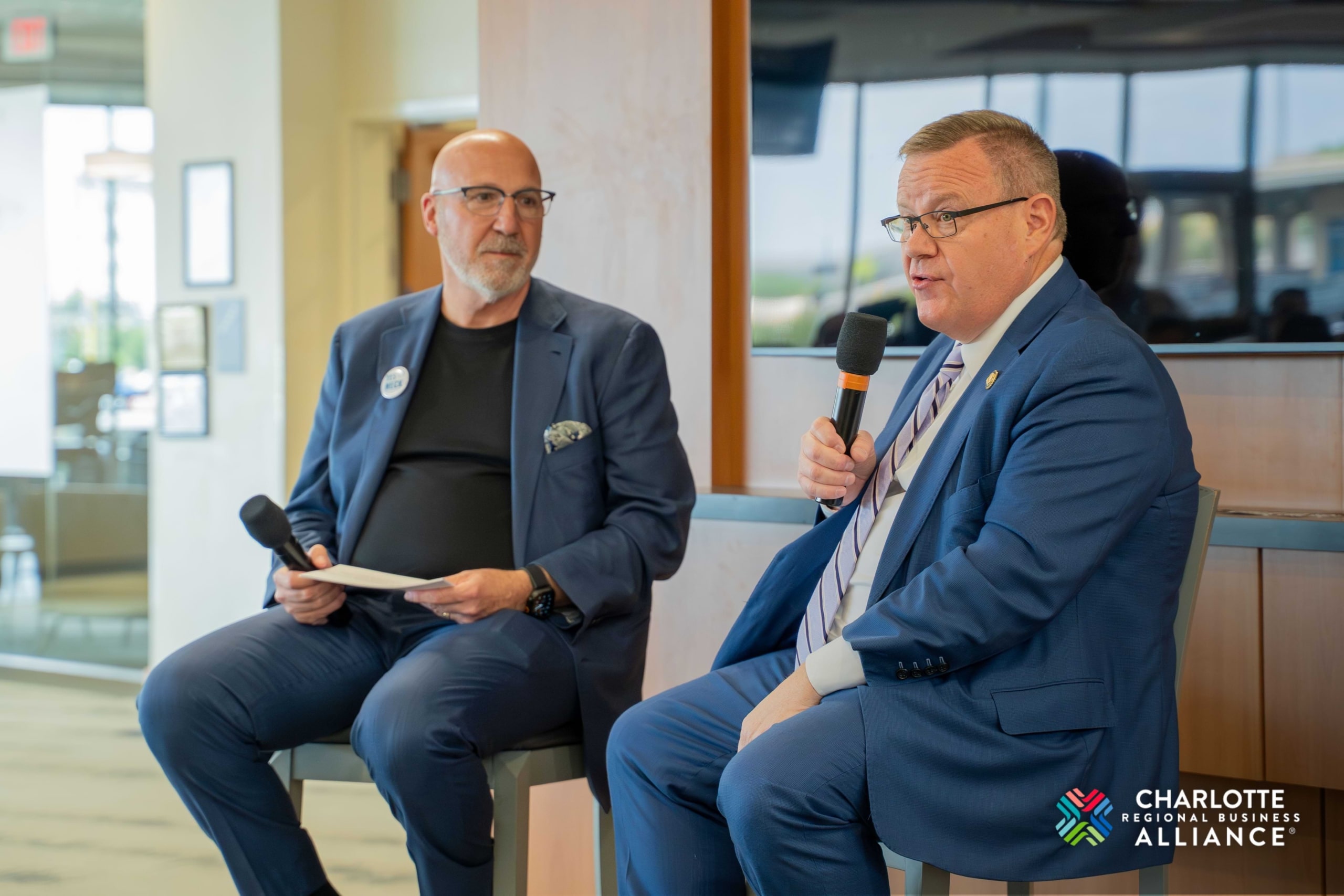This year, the Charlotte Regional Business Alliance’s Exploring Economies trip took local leaders and members of the business community to Boston, Massachusetts.
At first glance, the East Coast powerhouses of Boston and Charlotte appear worlds apart. Their histories, demographics, and urban development tell different stories—Boston, a centuries-old city with nearly twice Charlotte’s population, and Charlotte, a fast-growing modern hub of innovation and opportunity.
How does the Charlotte Region compare to the Boston Region?
By the conclusion of the trip, however, their similarities had become clear. Attendees returned home with valuable lessons about how collaboration, infrastructure, and talent investment fuel both cities’ success.
Building growth for everyone
The trip began with an exploration of what makes regions thrive, led by Ben Armstrong (Executive Director and Research Scientist, MIT Industrial Performance Center). His message: Cities succeed when they combine talent, infrastructure, and innovation. However, the most sustainable success stories also invest in middle-wage opportunities and inclusive growth, which creates chances for upward mobility.

Armstrong outlined Boston’s high-tech ecosystem, highlighting its strong biotech and life sciences sectors. The discussion underscored a key takeaway for Charlotte: long-term prosperity depends on growing the middle. Investing in education and workforce training opens doors to quality, middle-wage jobs — and when education improves, stronger economic outcomes naturally follow, making it one of the smartest investments a region can make.
While Charlotte continues to post strong growth numbers, Armstrong noted the opportunity to deepen innovation capacity through partnerships between universities, industries, and businesses.
Sports as an economic catalyst
Boston’s reputation as a sports city extends beyond competition. In a panel featuring Jack Fleming (President and CEO, Boston Athletic Association), Brett Miller (Senior Director of Special Events, Fenway Park & Executive Director of Wasabi Fenway Bowl), and Adam Sperling (Executive Director, Truist Championship), leaders discussed how sports and entertainment drive community, tourism, and economic vitality.
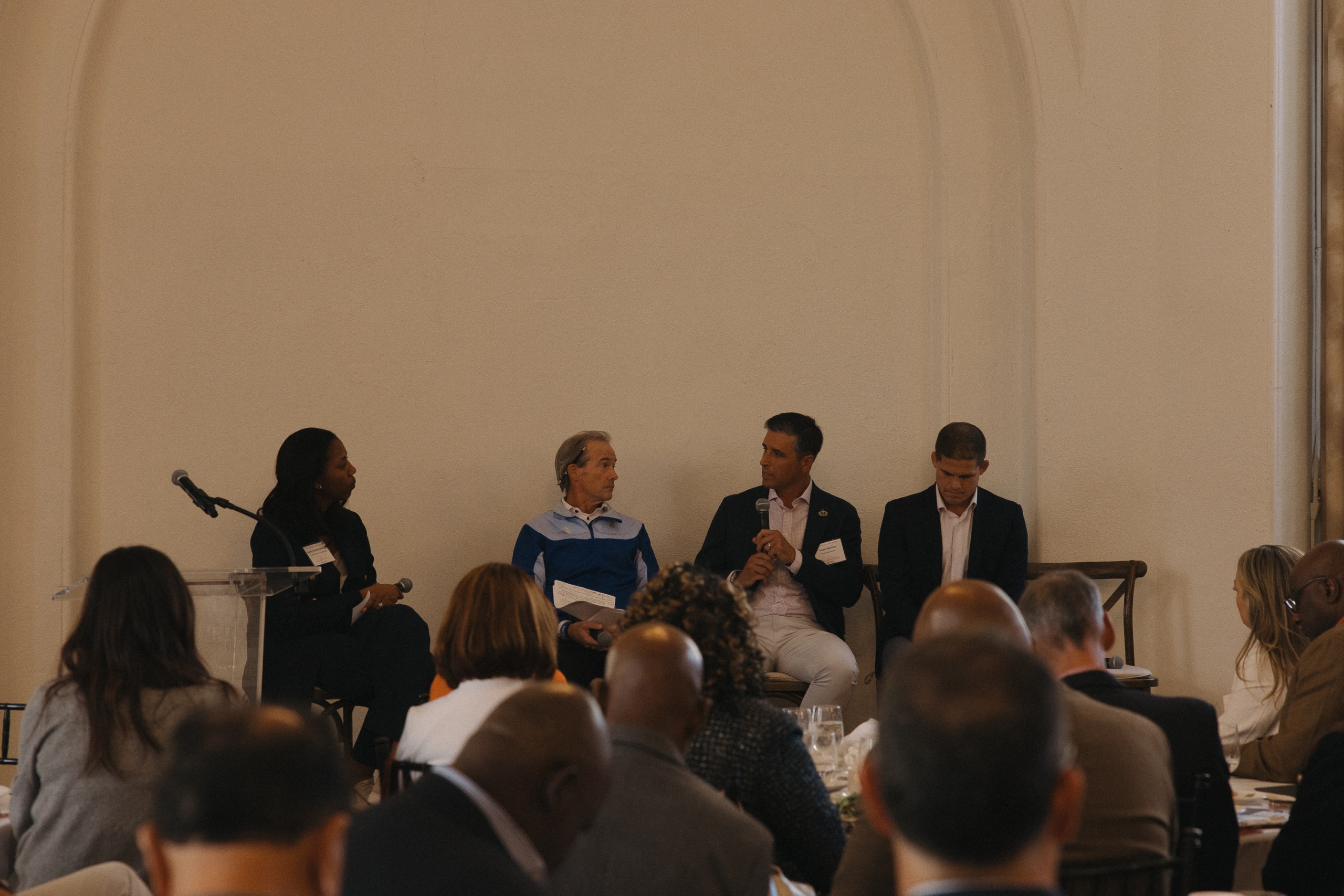
The Boston Marathon, run by BAA, generates more than $500 million in local economic impact during race week. A global example of civic pride and partnership, its success stems from authentic community engagement. The race itself spans eight cities and towns, and more than 9,500 volunteers help pull it off annually.
Charlotte’s own Truist Championship carries similar potential. Sperling emphasized building year-round engagement through local markets, small business partnerships, and volunteer programs to ensure the events strengthen the region’s social and economic fabric.
The Boston Marathon, Fenway Park, and the PGA Tour demonstrate how sports can create energy and community connections. They’re often about more than just the sport – many fans are drawn in through family tradition that’s been passed down for generations.
Fenway Park engages with the community beyond Red Sox games. Events include season ticket holder batting practices, public skate days, flag football tournaments, and high school football games, from which a large portion of the proceeds go back to the schools.
Innovation in action
At Northeastern University’s Institute of Experiential Robotics, Exploring Economics attendees saw firsthand how university-industry collaboration accelerates innovation and workforce readiness.
Northeastern’s investment in robotics applications ties directly to local strengths like healthcare and logistics. Attendees even got to see a robot in action.
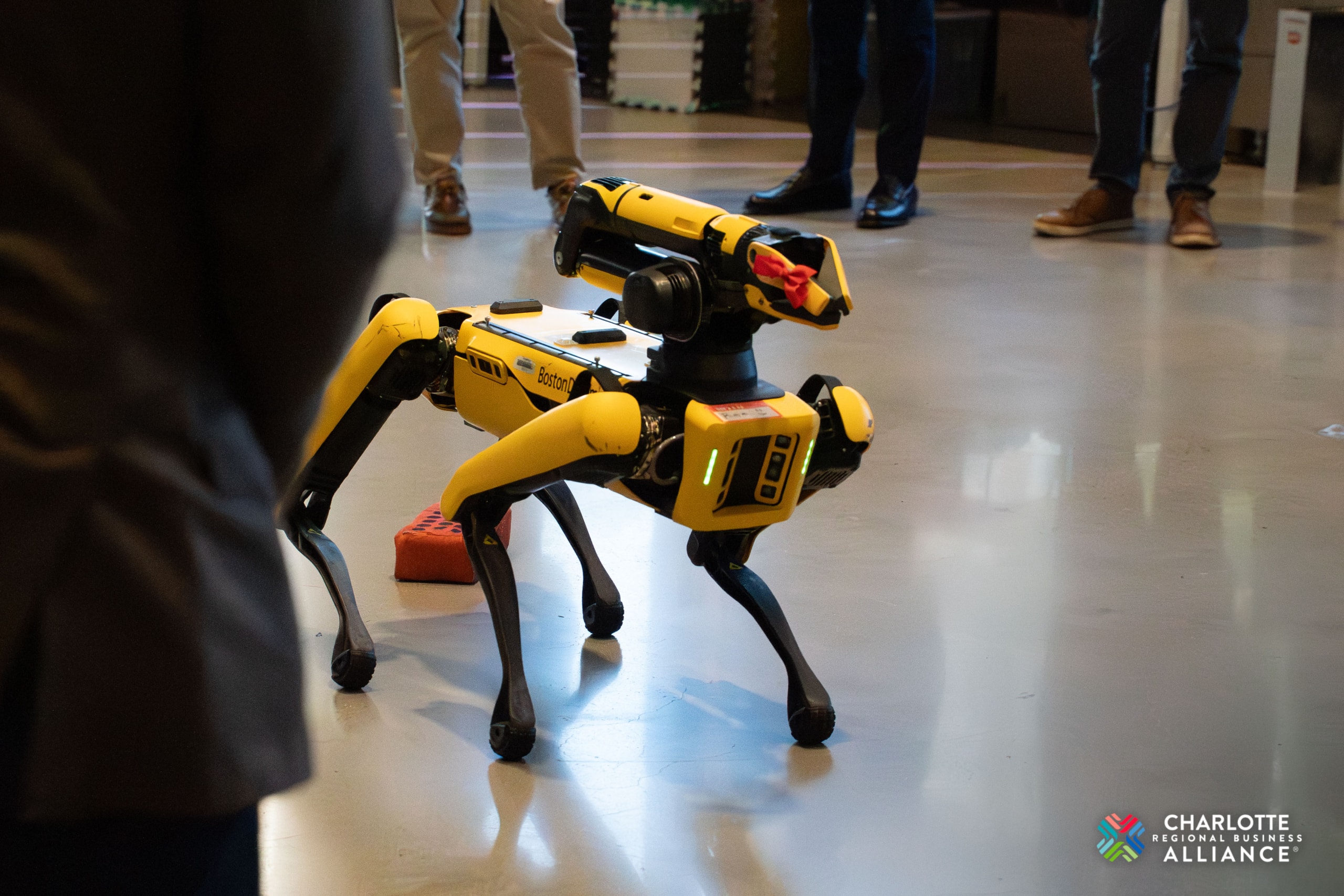
The takeaway for Charlotte is clear: when we invest consistently in research, entrepreneurship, talent, and the infrastructure that connects them, we set the stage for our region to become a true hub for innovation.
Infrastructure and the power of mobility
At Faneuil Hall, the discussion turned to transportation, an issue deeply intertwined with economic development. Jay Ash (CEO, Massachusetts Competitive Partnership), Katie Choe (Chief of Staff, MBTA), Jascha Franklin-Hodge (Chief of Streets, City of Boston), Jim Rooney (President & CEO, Greater Boston Chamber of Commerce), and Meredith Slesinger (Rail & Transit Administrator for Mass DOT), emphasized that transportation is the foundation of economic opportunity.
Faneuil Hall has hosted civic debates for 275 years; early debates centered on choosing canals or railroads to link New England to the nation. The venue’s legacy underscored the long‑standing link between transportation and regional development.

Boston’s “Transportation First” initiative unites the business community and government around mobility as the key to addressing housing, climate challenges, and economic opportunity. From dedicated bus lanes and commuter rail planning to congestion relief and bike-share expansion, Boston is reshaping how people move and connect.
The Charlotte Region is preparing for its own transportation referendum, and Boston’s experience highlights the transformative power of long-term investment.
“When we give people a great transportation system, we give them opportunity, we give them choice, we give them the ability to thrive, and nothing is more important for government to be focused on than that,” Franklin-Hodge said.
Kendall Square: Innovation with a neighborhood feel
In Cambridge’s Kendall Square, participants witnessed the physical embodiment of Boston’s innovation economy. Once industrial land, the district now hosts global names like Google, Moderna, and Microsoft alongside locally owned restaurants and nonprofits, representing one of the densest clusters of R&D in the world.
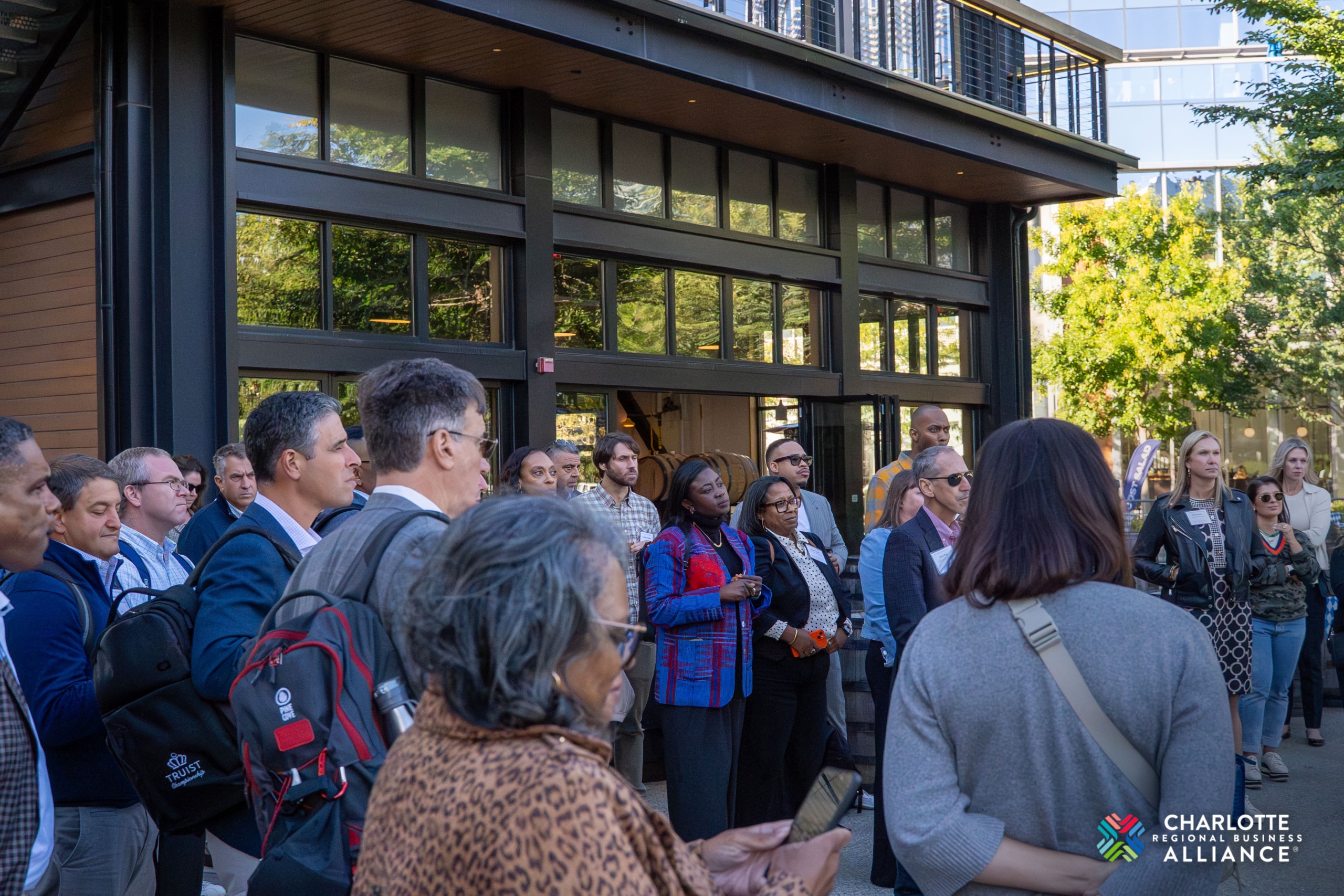
Beth Maloney (Executive Director, Kendall Square Association) shared how decades of public-private partnerships and state investment transformed the area into a globally recognized innovation hub. The neighborhood now features cutting-edge lab space, public art, and sustainable infrastructure such as Moderna’s new geothermal-powered building, one of the greenest in New England.
Investing in human capital
Leaders Kristin Moul Driscoll (Executive Director, Workforce Development, Mass General Brigham), Anna London (President & CEO, Charlotte Works), and Trinh Nguyen (Chief of Worker Empowerment and Director of the Office of Workforce Development, City of Boston) detailed how Boston builds inclusive pathways to family-sustaining wages. They focus on “human capital” – their workers and families – so that employers can recruit and retain employees.
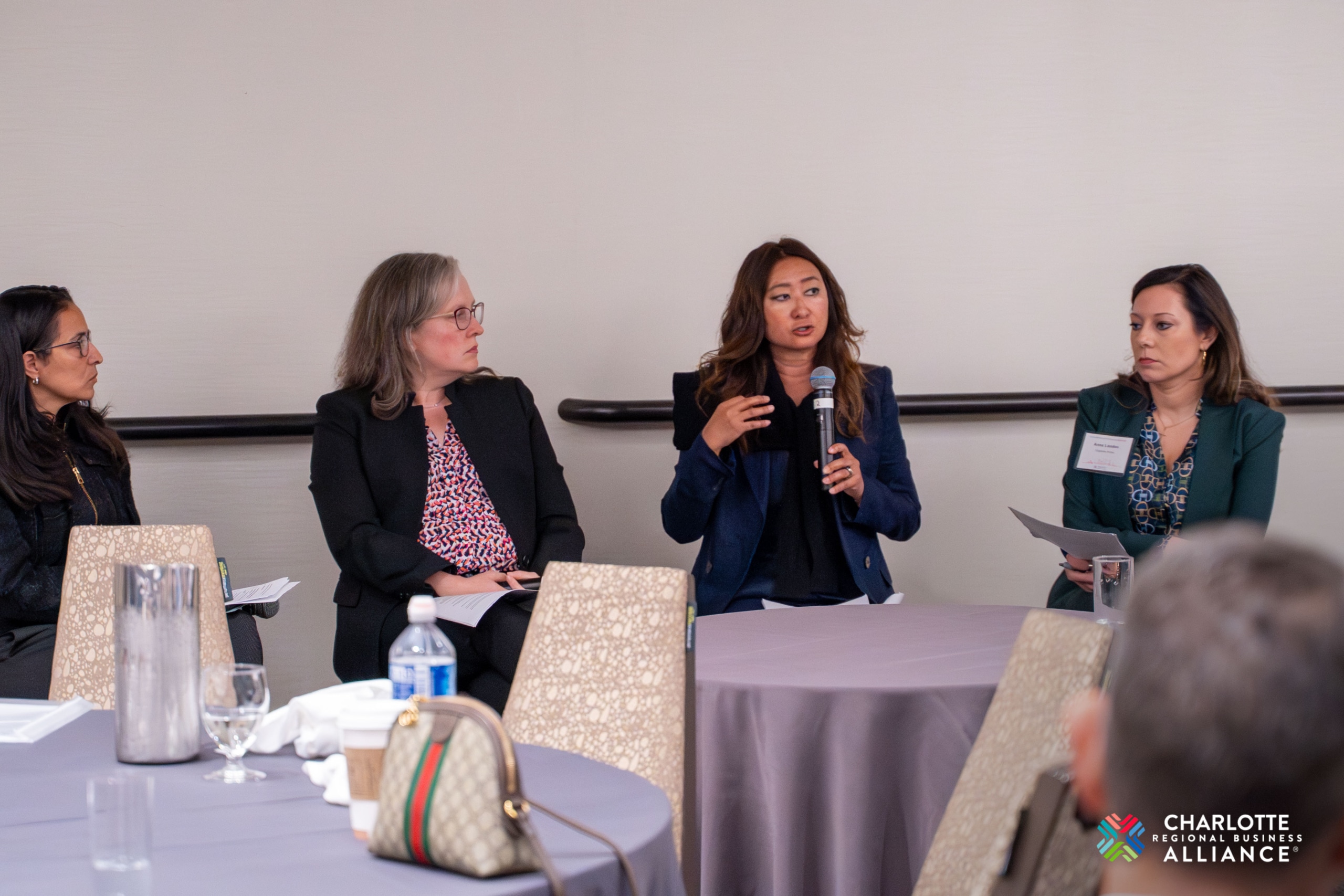
Workforce Development and Talent Pipeline with Kristin Moul Driscoll (Executive Director, Workforce Development, Mass General Brigham), Anna London (President and CEO, Charlotte Works) and Trinh Nguyen (Chief of Worker Empowerment and Director of the Office of Workforce Development, City of Boston)
Employers move to Boston because it’s a world-class, competitive city that invests in its people, Nguyen said. Those investments include workforce development programs, which enables incumbent workers to advance into high-demand allied health careers, and flexible English for Speakers of Other Languages (ESOL) programs.
Boston’s model, where employers like Mass General Brigham invest directly in community talent, illustrates how human capital drives the city’s competitiveness.
Transforming Seaport: A case study in placemaking
The final Exploring Economies session took place in Seaport overlooking Boston Harbor. Seaport’s transformation over the past two decades has turned industrial land into a vibrant, mixed-use destination.
Kristin Canty (Proprietor & Operator, Woods Hill Pier 4), Maureen Joyce (Head of U.S. Real Estate Equity, Barings), Rob Little (Head of Real Estate, Mass Mutual), Richard Martini (Executive Managing Director, The Fallon Group), and Yanni Tsipis (Senior Vice President – Fenway I Seaport Development, WS Development) described how $15 billion in combined federal, state, and local investment reshaped Seaport’s skyline, activated public spaces, and integrated housing, retail, and office development.
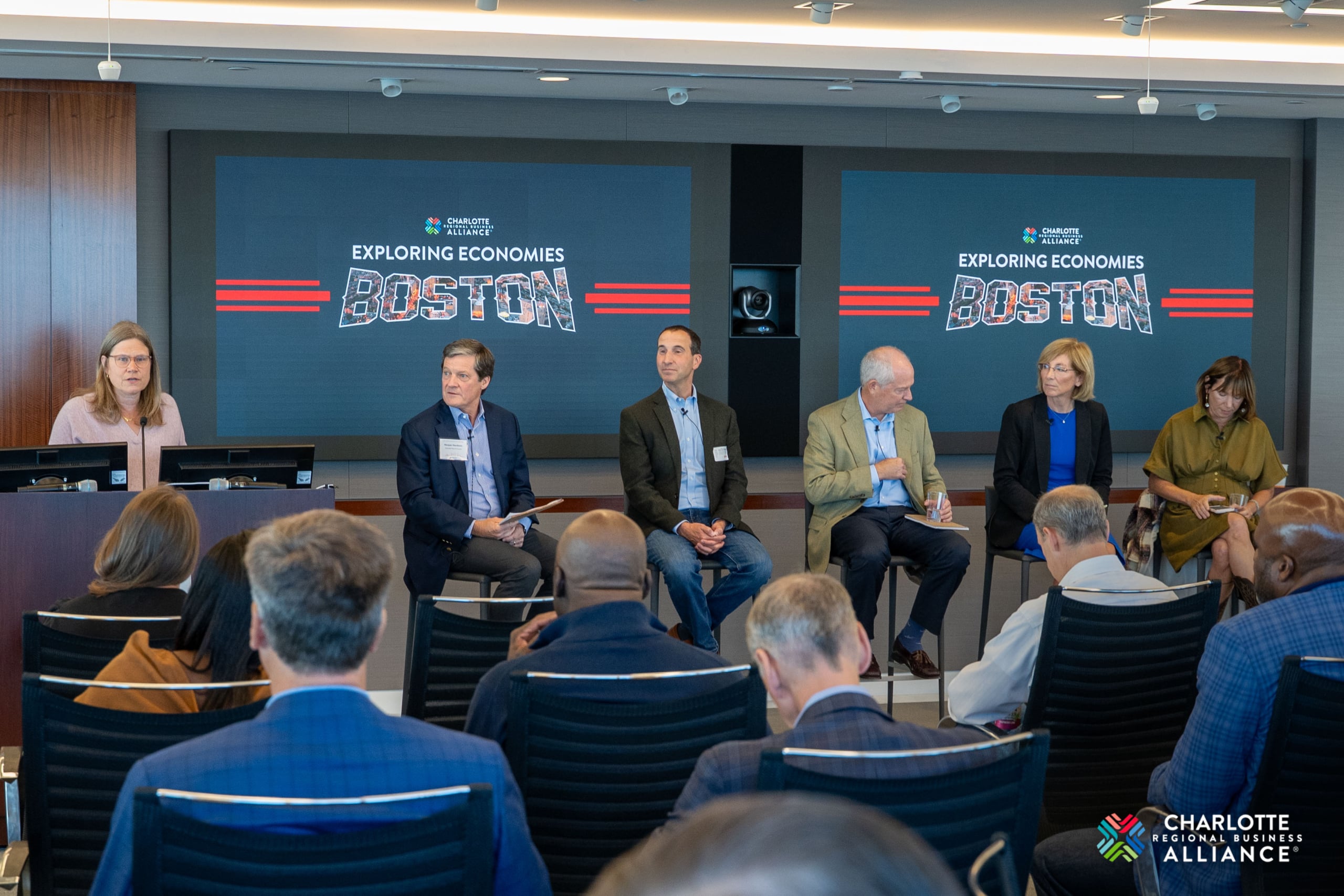
Transforming Seaport discussion with Kristin Canty (Proprietor & Operator, Woods Hill Pier 4), Maureen Joyce (Head of U.S. Real Estate Equity, Barings), Rob Little (Head of Real Estate, Mass Mutual), Richard Martini (Executive Managing Director, The Fallon Group), and Yanni Tsipis (Senior Vice President – Fenway I Seaport Development, WS Development)
The key to success: authentic placemaking. Over 500 free public events annually, open-air retail, and seamless connectivity through road, rail, ferry, and pedestrian infrastructure have created a community that’s “a beehive of activity” day and night. The area was revitalized with deep respect for the city’s 400-year history while giving Seaport its own identity and soul.
The discussion resonated with Charlotte’s own redevelopment efforts, including the Iron District, where historic character meets modern design.
Shared lessons, shared future
From Faneuil Hall’s civic roots to Seaport’s cutting-edge design, Boston offered a masterclass in how public-private collaboration, intentional planning, and talent investment can transform a city’s trajectory.
For the Charlotte Region, the visit reinforced the importance of connecting economic mobility, workforce readiness, and infrastructure to sustained growth.
“Exploring economies like Boston’s gives us a roadmap for how Charlotte can continue to lead—with partnership, with purpose, and with people at the center of progress,” said Robert McCutcheon (President and CEO, CLT Alliance).


